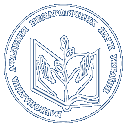- Рева, Олексій Миколайович (orcid.org/0000-0002-5954-290X) and Камишин, Володимир Вікторович (orcid.org/0000-0002-8832-9470) (2022) Theoretical fundamentals of the application of the “histeresis” catastrophe flag for modeling the process of development / destruction of knowledge, skills and abilities Освіта та розвиток обдарованої особистості, 1 (84). pp. 93-101. ISSN 2309-3935
|
Text
IOD_184-05_05-93-101.pdf Download (1MB) |
Abstract
The possibility of using the so-called catastrophe flags (modality, inaccessibility, catastrophic jumps, divergence, hysteresis, linear response divergence, critical deceleration / softening of mode, anomalous variance) to substantiate the synergistic effect in the pedagogical process is substantiated. Among them, the flag “hysteresis” is more acceptable for modeling and identifying patterns of development / destruction of educational potential (knowledge, skills, abilities). For the first time in the practice of didactic processes the concept of simple and complex hysteresis is substantiated. Moreover, in the first case, the processes of development / destruction of educational potential are described by ordinary and popular in the practice of research exponents, in the second – a set of such exponents, which are usually represented by S-shaped curves. Given that the studied learning potential in the process of development / destruction must pass at least four levels (initial (low) – medium – sufficient – high (creative)), it is a combination of two S-shaped functions, which opens up prospects for the use of appropriate spline functions. The application of catastrophe theory to find the causes of the synergistic effect in learning, especially the bifurcation point is usually limited to the description of the geometric characteristics of the model. Given the theoretical results of the analysis of catastrophe flags that accompany the processes of synergistic effect in learning, it should be noted that fully adapted to the needs of didactics flag “hysteresis”, which is essentially a model of destruction of educational potential. The hypothesis of multilevel synergetic effect is put forward, which led to the introduction of the concepts of simple and complex hysteresis. It is worth paying attention to the need to justify the number of stages of formation / destruction of levels of academic achievement. Instead, other catastrophe flags (modalities, unreachability, catastrophic jumps, divergences, linear response divergences, critical decelerations, and anomalous variance), which determine the achievement of a bifurcation point and the emergence of a synergistic effect, should also be the subject of more detailed research.
Downloads
Downloads per month over past year
Actions (login required)
 |
View Item |




